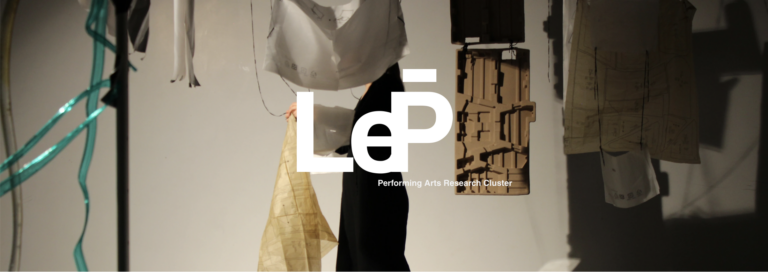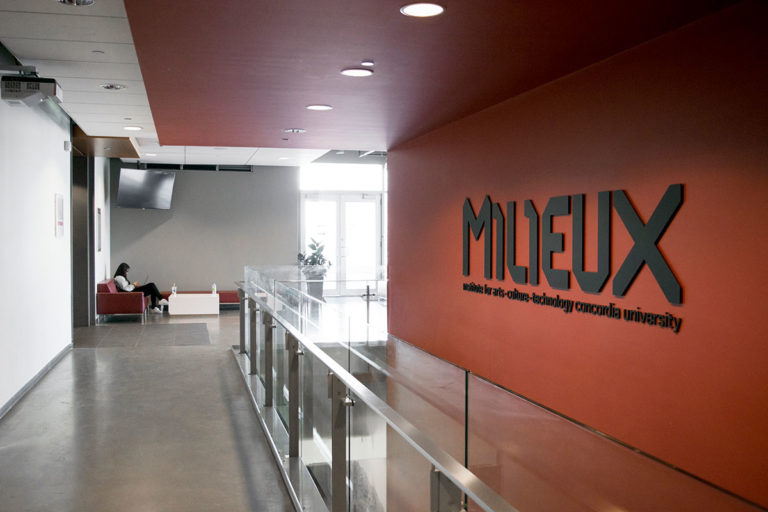Part II of our interview with Institute Co-Director Chris Salter by Stephanie Creaghan, Head of Communications at the Milieux Institute, and Brennan McCracken, PhD candidate in English at Concordia University
(Part I is available here)
Chris Salter: Different entities have different levels of sense perception, different bodies have different levels of sense perception. So it’s not that humans are the singular ideal.
SC: Placing humans at the top of this hierarchical schema makes me think of Thomas Nagel’s What it is Like To Be a Bat; we might know of other beings’ navigation of the world but we can only really speak from our own. What you said about the studies on sense perception is so interesting, in terms of technology. Three years before 1870, Capital, Volume 1 by Karl Marx was published. This was the industrial era, when more than ever humans and technology were intrinsically combined, and human became machine at that point.
CS: And now we’re at the point where we’re trying to build machines that are independent of humans, that no longer extend humans but become their own kind of entities – But these are still stupid substitutes – don’t forget, the Czech word robota means worker but also slave. The minute you design a machine that has some sense of its own finitude, then you get closer to something that resembles life and then there will be some kind of new paradigm shift.
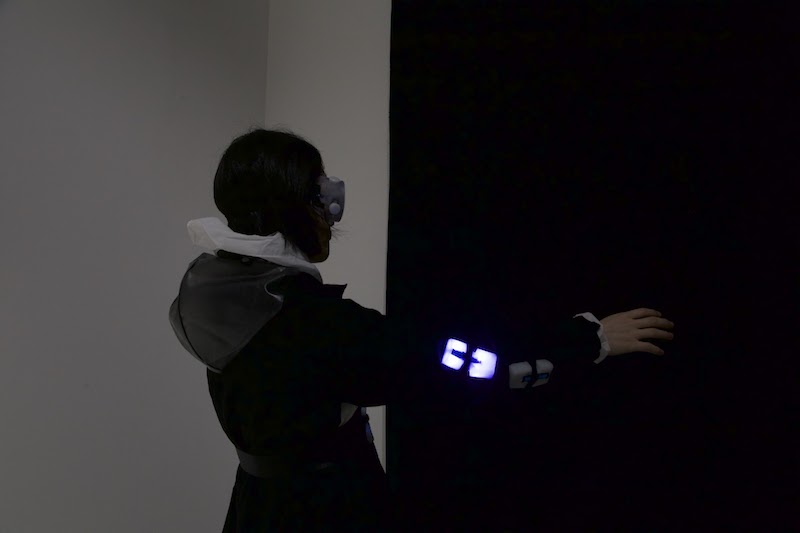
SC: RE: Haptic Field, and how in different countries people react differently to darkness—spirits approaching or reflection on the liminal nature of their lives—how this infinite technology provokes reflection on our own finitude, and different cultures’ relationships with death is really interesting.
CS: It’s really what the anthropologist Victor Turner described as the distinction between liminal and liminoid experience—liminal being social rites of passage and the transformation that occurs in a community and what happens in between, and what he called liminoid – individual transformation that takes place in an advanced capitalist society. So you can say, yes, this installation Haptic Field is an instigator for a certain kind of threshold experience that actually pushes on the border of what we call human experience and human perception, yet it’s all too human! As we only have our human way of looking at the world; the spirits which one sees, they may be way beyond us, but they’re produced by our own cultural-social-biological upbringing.
SC: It’s like how they might be beyond our lives, but they are produced by what we see within our lives.
Next question:
Brennan via Stephanie: You’re also part of the team behind the collaborative project SENSEFACTORY. What can you tell us about that project?
CS: SENSEFACTORY came out of funding in Germany in 2019 for Bauhaus projects. Dietmar Lupfer, a frequent collaborator who runs a large cultural centre in Munich called the Muffatwerk, was talking to me after the opening of Haptic Field in Munich, and said, “Do you have any Bauhaus projects?” And I said, “Yeah, yeah, Moholy-Nagy!” and we actually had the same project in mind – Moholy-Nagy’s Sketch for a Mechanical Eccentric, which was a graphic score he made in 1923 for a theater of machines that would stimulate all of the human senses but it was never realized. We thought, this is an interesting period in history, and how we do we think about a theatre of machines, wherein the human body is not the centre of the world anymore (or so we might like to think). These avant-garde European thinkers in the 1920s, of which the Bauhaus is a prime example imagined the new socialist world that was emerging—and it was a socialist world that came deeply out of, not replacing the human, but emphasizing the capabilities of the human by putting those machines there.

SENSEFACTORY thus merged out rethinking or considering what the Bauhaus would make in 2019 with the tools and techniques that those thinkers in the 1920s could only have imagined. We were really looking at the construction of a sense environment that was overwhelming, but also playful and somewhat dangerous. Out of it came this enormous inflatable environment; the walls are all fixed, but inside all the modular pieces are in flux.
Originally, we wanted a critique of surveillance technology, and then later wanted to move away from this sort of media art trope. We wanted to create the sense that this is kind of… a sediment, this is not what the work is about. It became an adult play space where you became aware that something is happening that is greater than oneself. It is a kind of social dynamic; people realized that their the senses were not individual but somehow exercised collectively. People would stay in this ever changing environment for hours, and there was a wide range of ages. It became something in the Bauhaus tradition with a level of creative expression that came not only from the creators but from the participants.
SC: The sense of scent is particularly interesting to me. It makes me think of John Waters’ Scratch and Sniff (from and for his 1981 film Polyester), and my own scent exploration: in 2018, myself and Flo Vallières collaborated with scent-maker April Lea (of LVNEA) to create a scent score for projections of Vallières and I’s work The Lantern, diffusing different scents—heavy cream, lavender, grass, dirt, piss, blood and fear—during the projection.
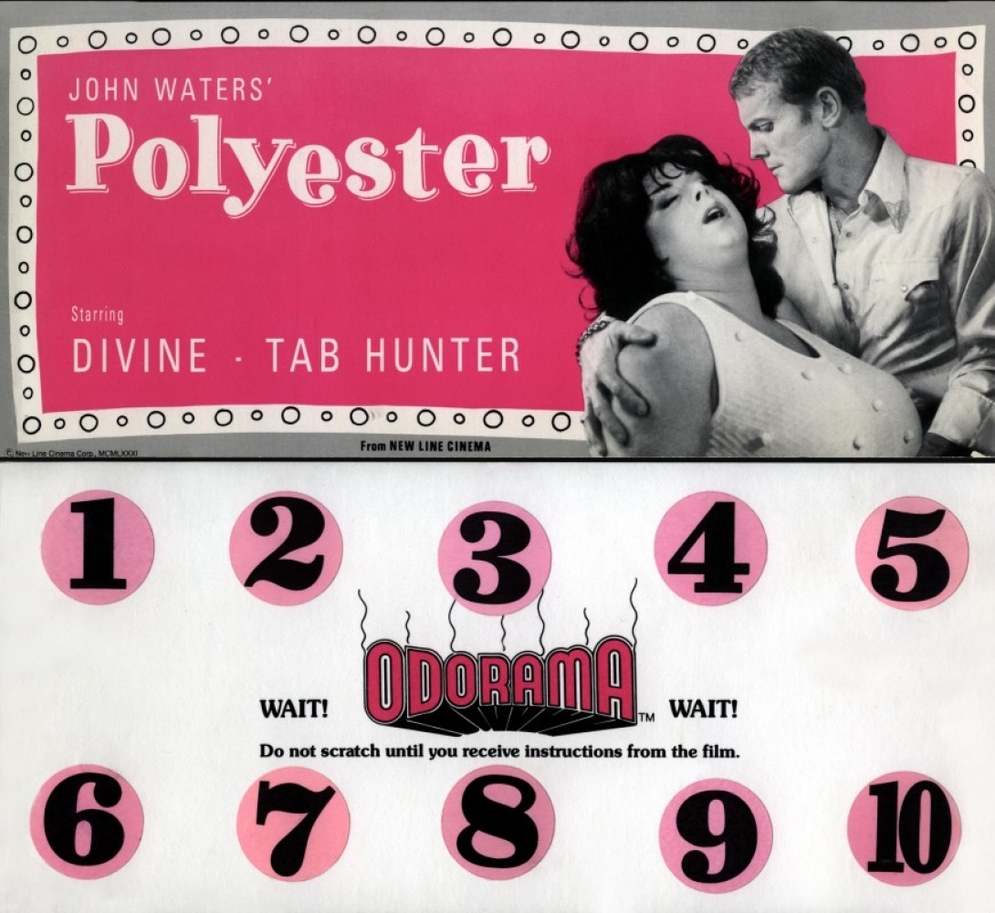
CS: For SENSEFACTORY, we had a room with a heavy menthol that the olfactory artist Sissel Tolaas designed for us – it was created to make people cry, but it was difficult to contain the scent or keep it concentrated.
SC: Yes! Scent is so sensitive: it is heavily triggering, but it is also notoriously difficult to narrate or direct.
CS: We ended up using a kind of slurry to coat the surfaces with the scents so these weird odors that Sissel created (I recall she called one “wakeful” and the other “potent” – the smell of sweat which she specialized in) would be super concentrated when your body made contact with them.
SC: That’s very smart! People talk about Proust and his Madeleines and how powerful taste is for triggering memory, but so is scent. It’s also related to taste. It’s such a memory trigger.
CS: There’s a whole chapter in my book Sensing Machines about e-noses and e-tongues, about the simulation of taste and smell that’s happening. What’s going on with research is completely insane! It entails these questions like, “Can you have a tongue without a brain?” Scientists and engineers are essentially creating fragmented, imperfect brains out of software – for instance, these artificial noses and tongues interpret and classify scents and tastes based on mathematical models – artificial neural networks. Biological taste buds are incredibly sophisticated because they don’t have this kind of global selectivity, which means that the brain breaks down what sour, bitter, sweet and salty is, not the taste buds. The taste buds are the most sensitive tactile elements of the body, and they are constantly growing and dying, being replaced all the time.
SC: Thinking of this in our contemporary global context: getting COVID-19 meant for many people losing their sense of smell, and consequently their sense of taste. Thinking about a tongue without a brain seems very relevant now.
Next question:
BM via SC: Why do you think organic language or images—the body, the ecosystem—are such generative, or durable, ways of imagining our relationship with technology, our bodily systems which seem to be at times at odds with technology?
CS: First: because those things are in interaction and interrelation with each other.
The whole point of the ecosystem is things are not isolated, they are interwoven. I was just rereading Jakob Johann von Uexküll, and he describes the life of a tick—the tick sits on a blade of grass. What is the Umwelt, or the surroundings, of the tick, or of the blade? Each experience is a bubble or a sensing-surrounding that is unique to that creature, not to anybody else. And the way the tick hangs on a blade of grass is very different from how the fly flies around, or how the human looks at the fly, but these worlds interact. These entities are not separate. There’s an interrelation, an overlapping, an overall system.
The second part of it is that the individual entities of these systems are important but they—especially insects, for example—produce random behaviours, but when you look at the whole, there’s something greater than the individual parts. This is what they call emergent behaviour; something that isn’t part of the initial construction of the system but seems to emerge over time.
Where do such patterns come from? Is there a rule book? Is there a probability model? Is there something in what we call nature? Is it built into the bodies? They did this test where they tried to figure out how fireflies worked and they realized that when they captured them in a room and started using a strobe light to essentially be able to see every “frame” of what the fireflies were doing, they saw that they all lined up next to each other, which you can’t see when they’re flying around! They were sending chemical signals between each other in an extremely orderly fashion – something we could never see with the naked eye.
So there’s all these things that happen at different scales. The third part of that answer is: these things intersect because they’re operating at different scales. It doesn’t mean that each entity understands the scale of the other, but that things that happen at the micro scale and seem totally disorganized seem very organized at the macro scale. And this is one of the fundamental problems of ethics: we don’t understand scale. We don’t understand temporal scale, or physical scale. Our climate emergency is a scale problem—now, there, in the future, something will happen. You have to look at all of these things—vacillating temperatures, natural occurrences and disasters—at scale. As the interrelations transform, the global dynamics change. And that’s very difficult to model with the tools of mathematics, and even more difficult for human perception to grasp, because it operates at a level of complexity and a level of interaction that is just very hard for us to imagine.
SC: It’s impossible to grasp.
CS: There is no individual God-like view from above looking at the whole thing with intent and motivation; these things are emerging as the result of all these interactions and transformations and it might be difficult for us to see the pattern.
SC: This discussion of seeing patterns on a micro scale versus a macro scale brings me back to what we spoke of at the beginning: this concept of logic or human intelligence, our way of understanding the world. We do this by classifying contingency in a way that is understandable and navigable. The climate crisis becomes difficult to navigate because the scale of it is so impossibly big—
CS: It’s non-linear too.
SC: It’s absolutely non-linear. Going back to this idea of a God with an intention or motive—people want to be able to blame specific people for things. I think of how plastic straws are banned but the 100 companies that are responsible for 70% of CO2 emissions are experiencing no restrictions whatsoever. This is completely in line with what capitalism is; it’s completely in line with this disproportionate sense of responsible that we discussed in Spinoza’s Ethics—this sense of responsibility, but also of alienation (to bring it back to Marx!).
CS: Capitalism has one goal: maximize revenue and minimize costs. That’s it! And to sustain itself in that way.
SC: And to do it endlessly. I remember when I was reading (Karl Marx’s) The Gründrisse, the way he spoke about capitalism struck me as very similar to a construct devised by the Marquis de Sade’s character Clairwill (in L’Histoire de Juliette ou les Prospérités du vice) describes a perpetual machine of cruelty that will function far beyond his own death—a whirling machine that promulgates itself (like Jean Cocteau’s La machine infernale)—much like capitalism seeks to expands and outlive its previous iterations forever.
CS: Ironically, we are now working on a project about excess consumption and machine systems that encourage it – and all we need to do is refer back to an idea from the French philosopher Georges Bataille – who tried to define a model of economy not based on production (like Marx) but on excess. This is where we are now.
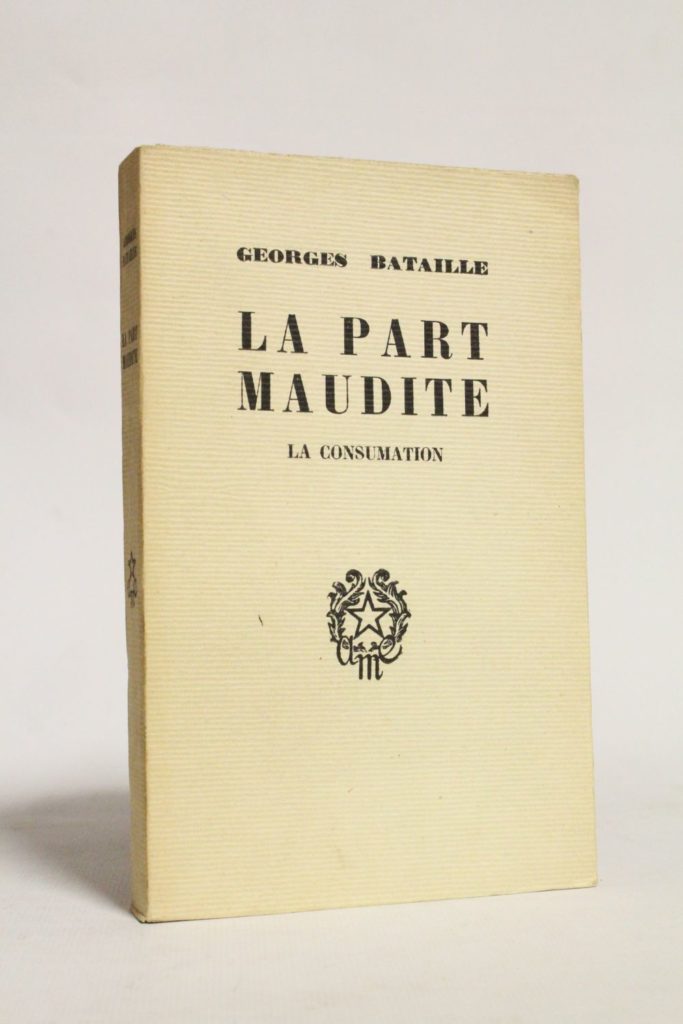
The Ars Electronica festival ran from September 8th to the 12th in a hybrid format. Chris Salter’s keynote talk was presented on September 9th, and the SENSEFACTORY presentation was available for viewing during the duration of the festival via the Hexagram Network’s EMERGENCE/Y garden. Recordings of the presentations and information can be found here.

